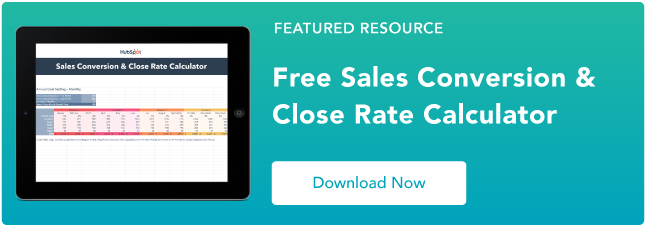Keeping your pipeline full has cascading effects. If you know you have plenty of opportunities to work, you won’t fall back on bad sales tactics (like discounting or guilting prospects) to close deals. You’ll feel confident enough to set your price and stand by it. Because you’re selling with integrity, buyers will respect you more. Not only will your average deal size be larger, but you’ll generate more referrals and positive word-of-mouth.

That means you’ll have more opportunities coming into the top of your pipeline -- bringing us full circle.
But how do you start the cycle in the first place? Many salespeople say prospecting is the most difficult part of the sales process. If you can relate, try these seven habits. I’ve helped reps on my team adopt these, and their results reliably improve.
1) ABP: Always Be Prospecting
Whether it’s the first day of the month or the last, you should always, always be prospecting. Spend time every day to do LinkedIn research, look for buying triggers in the news, and email and call new prospects.
Consistency is critical. If you let yourself take a day off one time, you’ll be tempted to do it again a week later -- and the week after that. Next thing you know, you don’t have any new deals in your pipeline.
Block time on your calendar, set an alarm on your phone, ask another salesperson on your team to keep you honest, write “prospecting” on your daily to-do list -- whatever it takes to stick with it.
2) Ask for Referrals
Your current customers are the best source of your next customers. They believe in your value proposition; if they didn’t, they wouldn’t have bought your product. So don’t be shy to ask for a referral.
No, “Can you recommend anyone I should talk to about this solution?” and “Would anyone you know be interested in the product?” don’t count. Make your request as specific as possible so a name leaps into your prospect’s mind.
For example, you might ask, “Do you know any partially or fully remote companies with less than 50 employees?”
3) Know Your Key Triggers
The most successful triggers will depend on your product, market, and prospect persona. Pay attention to which triggers most often lead to deals. For example, maybe 30% of new business comes from companies who recently opened a second office, while 10% comes from companies who just hired a chief culture officer.
Once you’ve homed in on your triggers, you can use them to execute with killer focus.
4) Know Your Top Customers
The same principle applies to your personas. If you close four times more deals with manufacturing corporations than tech startups, you should prioritize manufacturing corporations. If you’re 46% likelier to win the deal when you work with the learning and development (L&D) team versus the culture team, you should get an introduction to an L&D employee ASAP.
Of course, to have these insights in the first place you must consistently update your CRM and periodically review your data. Don’t fly blind: Every action you take should be strategic.
5) Automate as Much as Possible
The simpler and easier prospecting is, the less you’ll dread doing it -- and the more efficient you’ll be. Fortunately, you’ve got plenty of tools to choose from that’ll help you prospect faster and better.
LinkedIn Sales Navigator, for example, will help you stay up-to-date on target buyers and/or accounts, find mutual connections, and even kick off timely, contextualized conversations.
HubSpot Sales lets you quickly customize and send emails, track their open and response rates, and see how and when your prospects are engaging with the content. It even lets buyers book open slots on your calendar, so you don’t have to spend precious minutes coordinating with them.
6) Use Social Media -- Selectively
LinkedIn, Twitter, and Facebook can be valuable prospecting platforms. Use them to monitor changes in your buyer’s world, find reasons for connecting with them, and position yourself as a subject matter expert.
That being said, many salespeople use social media as an excuse for avoiding the phone. If you’re always putting off calling prospects because you’re “busy” tweeting or commenting on LinkedIn posts, it’s time to reevaluate.
Yes, you’ll get rejected far more often on the phone than online. But you’ll also be successful far more often: When it comes to sales, nothing beats an actual interaction. So face your fears, and make sure social selling complements -- not replaces -- your other prospecting activities.
7) Never Stop Learning
Nearly six in 10 salespeople won’t change once they’ve figured out what works for them, according to a HubSpot Research report.
The problem with this? Prospects change, buying processes change, industries change, and competitors change. A winning strategy right now is a failing strategy in one year -- maybe even sooner.
To stay current, you can’t get complacent. Try different techniques, read books, listen to podcasts, and develop new skills. It doesn’t matter how experienced you are -- there’s always more to learn. Believing there’s no room for improvement is pure arrogance and will hold you back in the long run.
![Download Now: Sales Conversion Rate Calculator [Free Template]](https://no-cache.hubspot.com/cta/default/53/059a7eef-8ad9-4bee-9c08-4dae23549a29.png)

![Purchase Order: What It Is & How to Create One [+ Template]](https://knowledge.hubspot.com/hubfs/ft-po-in-business.webp)








